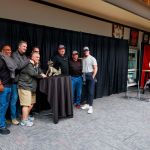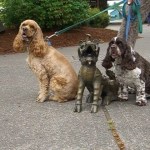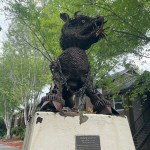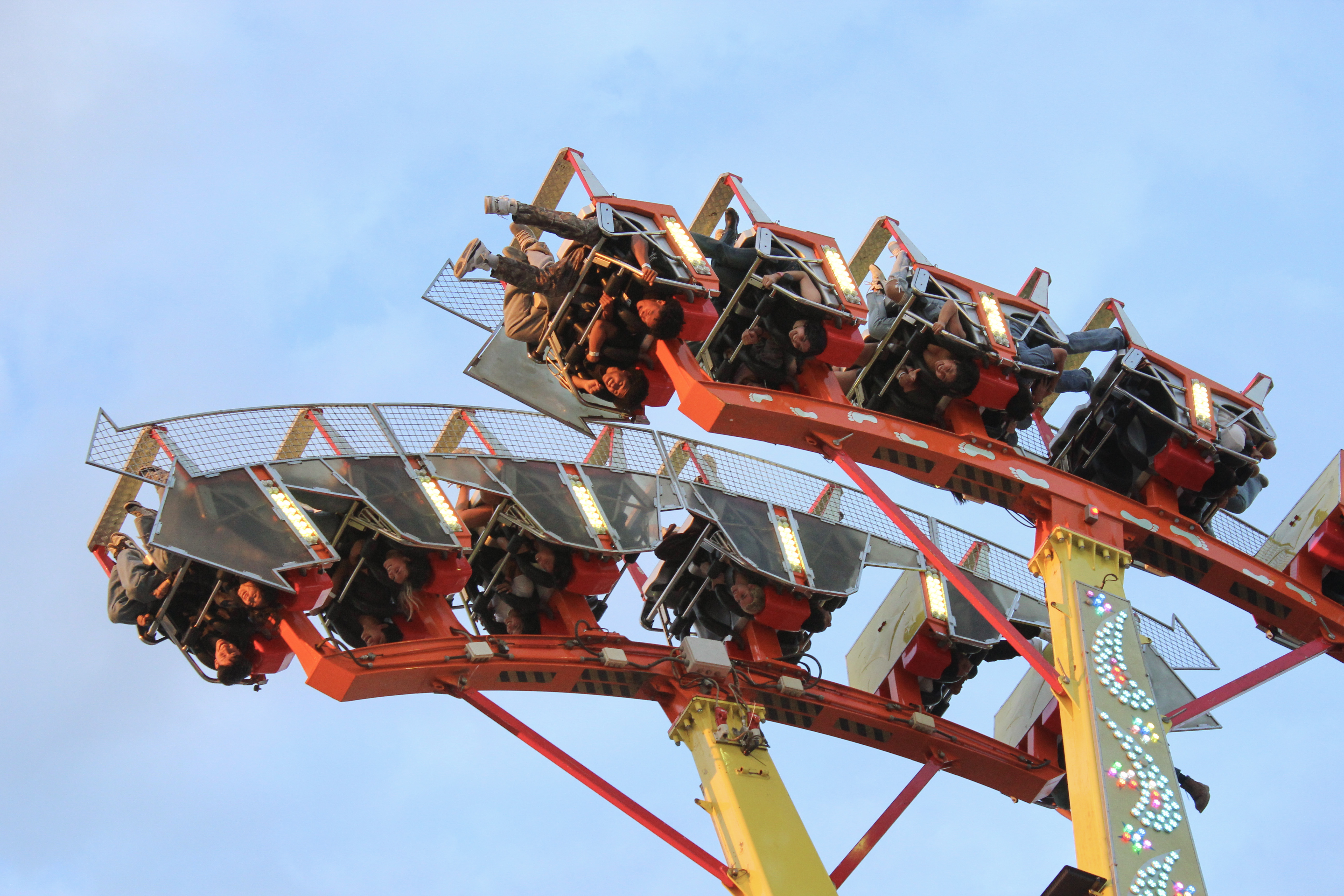Unsolved mysteries: What happened to the second iteration of Pacific University’s long-lost mascot?
Published 4:50 pm Friday, November 1, 2024




Oregon has long been known for its iconic university mascots: The Oregon Duck, Benny Beaver — and Boxer?
Beyond the curiosity around what exactly Pacific University’s mascot is, the bronze statue has left a legacy of questions, including where it has been for nearly six decades.
After 55 years, the Forest Grove institution recovered its long lost mascot, reuniting it with — and introducing it to — alumni during Pacific University’s Homecoming celebration this October.
But even with one of Oregon’s greatest campus mysteries solved, questions persist about its elusive reincarnation.
So what exactly is Boxer?
Despite the name’s brawny ring, Boxer isn’t a dog or a fighter. The bronze statue represents a qilin (pronounced chee-lin), an imaginary creature from Chinese lore, embodying an amalgam of fantastical features — the head of a dragon, hooves of a horse, the antlers of a stag and the scales of a carp.
The story begins in the late 1800s when alumnus Joseph Elkanah Walker, returning from missionary work in China, sent the incense burner home to his mother. In 1896, his family donated the statue to Pacific University.
Deemed “Boxer” by Pacific’s student newspaper in reference to the Boxer Rebellion in China, the statue quickly became more than a curio; it transformed into a symbol of school spirit and the university’s own mystique.
In 1899, Boxer was spirited away from Brighton Chapel, once in Marsh Hall on campus, kicking off an odyssey of reappearances and disappearances that spanned decades. Boxer would emerge briefly, igniting excitement, only to vanish again.
Two rituals emerged over the years: the Boxer “toss,” where student groups would battle for the possession of the statue — devolving into a mosh-pit-style scrum that left shirts torn and elbows bruised. Similarly, a “Boxer Flash,” where a group in possession would briefly display the statue, would lead into raucous melees.
Bruce Bishop, a Pacific graduate of 1968 who dedicated his efforts in recent years to locating the mascot, recalled the literal battle scars students would endure in the chaos fueled by camaraderie, competitiveness and what can be assumed was a hefty dose of machismo.
“If somebody whispered ‘Boxer’ during the class, the entire building would empty out. People would just get up in the middle of class and walk out, because that meant there was going to be a Boxer ‘toss’; everything stopped,” he recalled.
Students would go as far as kidnapping and interrogating each other, with one account detailing fraternity brothers being stripped and left on the side of the road after refusing to reveal Boxer’s location.
By 1968, the student body decided to officially replace the school’s original mascot from the Badgers to the Boxers in honor of the qilin’s symbol on campus. But just a year later, Boxer would be abducted in a final toss and eventually ended up in California, where it remained until February 2024 — following five years of negotiations.
The recast that vanished
Mourning over the loss of Pacific’s beloved mascot and wanting to reinvigorate school spirit, students Kim Smith, Linda Parker and Janet Leasher commissioned a University of Oregon art student to produce a recast of Boxer in 1982, Bishop explained.
“(The artist) produced Boxer II basically off of one photograph … I think (the new version) was bigger and heavier and less ornate than Boxer, but he did the best he could,” Bishop explained.
The new statue eventually came into the possession of the Gamma Sigma fraternity at Pacific, inspiring alumnus Dean Croshere to document Boxer’s history.
“I had a senior thesis project, and I wanted to make a documentary, but the idea I originally had wasn’t working. Around that time, somebody from my fraternity had stolen Boxer, and it occurred to me that this was an opportunity to make a documentary about this thing that I was actually curious about,” Croshere said.
After graduating, Croshere took the recast statue on a road trip across the country, photographing it at various monuments — spanning Mount Rushmore and Niagara Falls — and sharing Boxer’s story with people from coast to coast.
“The school got behind it; they printed up a banner with the URL for the blog I had — because that’s what you do in 2007 — and put it up on campus,” Croshere recalled.
But when he returned, a question arose: “What do we do with this thing?”
While Croshere believed the days of brawling over Boxer should remain in the past, he thought a friendly competition could rekindle the tradition of competing to acquire the mascot.
“I was thinking of some sort of academic decathlon-esque type thing where there would be a variety of events, and the winner of these events gets to get Boxer,” he said.
Landing on the idea of a trivia contest, Croshere attempted to organize the event on his own — that may have been a mistake, he acknowledges in retrospect.
“I was trying to advertise this event and throw this event, pull together all the people and the rules of the event and meet with people to make it happen. And people were definitely pretty frustrated about it,” Croshere recalled.
As part of the trivia contest, Croshere planned to not just give up possession of the statue but offer cash prizes. To raise money, the plan was to have local businesses take a picture with Boxer to draw more attention to their establishments.
But soon one of Croshere’s fraternity brothers had taken the statue to a business, he would later leave a voicemail saying he was “jumped” and the incense burner was taken.
“I never saw it again,” Croshere said.
The second statue remains missing to this day, with no leads on its whereabouts more than a decade later. A single photo, showing Boxer beside two dogs on a sidewalk in an unknown location, is the last known image of the replica, according to Bishop.
Though rumors circulate that Croshere himself played a role in its disappearance, he denies any involvement.
“I don’t blame people for thinking that I still have it or am responsible,” he said. “It’s a totally reasonable conclusion, but it would feel relieving to have it returned and no longer be presumed guilty of that disappearance.”
Where Boxer currently stands
In 2018, a third Boxer was commissioned after a fundraising campaign led by Bishop. The goal was to bring Boxer back for the 50th reunion of Pacific’s class of 1968 — the first students to graduate as Boxers. Artist Pat Costello, who created the second Boxer, was enlisted to cast a new version, this time more accurate in size and detail to the original.
Per tradition, Boxer III was briefly stolen when vandals used a drill to remove it from a glass case on the ground floor of the school’s library. But that disappearance did not last nearly as long as the first two, with the mascot being returned within two hours and has since been secured, aside from guarded appearances at specific events.
Moving forward, students will have more opportunities to view both statues currently in Pacific University’s possession — and Boxer II, should it ever resurface — with plans from the university to develop a display case in the lobby of Marsh Hall, according to Blake Timm, Pacific’s associate director of communications.
For Bishop, the return of the original Boxer brings a renewed sense of nostalgia for Pacific’s alumni. With Boxer I back in its rightful place, he hopes it’s only a matter of time before all three statues are reunited, ending decades of mystery once and for all.
“I think it’s in Washington County somewhere,” he said of Boxer II. “I don’t know who has it or where, but hopefully, we can get them to return it. I’d really like to get all three of them together, because I think the three statues really tell this greater story.”









